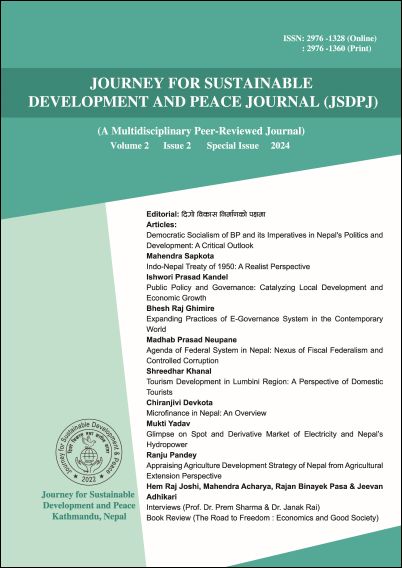Indo-Nepal Treaty of 1950: A Realist Perspective
DOI:
https://doi.org/10.3126/jsdpj.v2i2.69561Keywords:
Bilateral relations, treaty analysis, geopolitical challenges,, Nepal-India relations, sovereignty, border issuesAbstract
The Indo-Nepal Treaty of Peace and Friendship, signed on July 31, 1950, between Nepal and India, was a landmark agreement aimed at fostering strong bilateral relations. The treaty facilitated free movement, residence, and business opportunities across borders, thereby enhancing mutual security and cooperation in the post-colonial South Asian context. Over the years, it has played a crucial role in promoting economic cooperation, defense collaboration, and cultural exchange. However, the treaty has also become a subject of debate due to shifting geopolitical dynamics and internal political shifts. This paper critically explores the treaty's influence on India-Nepal relations, focusing on its contributions to trade, investment, and defense collaboration. Despite these achievements, its relevance is increasingly questioned due to unresolved border disputes, China's growing presence in South Asia, and political instability within Nepal. The analysis suggests that revisiting and revising the treaty's provisions is essential to address these contemporary challenges. Ultimately, the study calls for a pragmatic approach that aligns the treaty with current geopolitical realities, ensuring a resilient and mutually beneficial partnership between India and Nepal. By adopting a realist perspective, this analysis underscores the strategic importance of adapting bilateral agreements to evolving regional dynamics.
Downloads
Downloads
Published
How to Cite
Issue
Section
License
This license enables reusers to distribute, remix, adapt, and build upon the material in any medium or format for noncommercial purposes only, and only so long as attribution is given to the creator.




